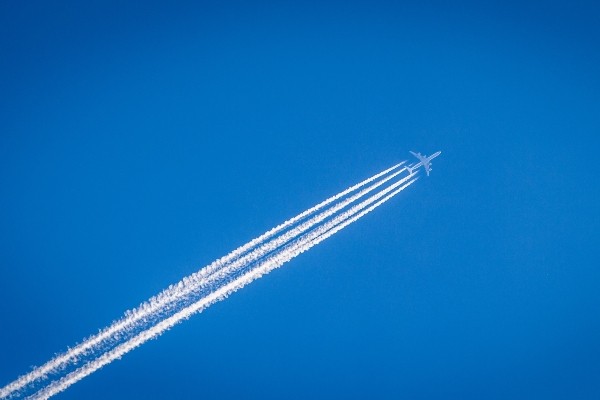Traveling with high blood pressure requires careful planning. TRAVELS.EDU.VN provides expert guidance and resources to ensure a safe and enjoyable journey, addressing concerns about air travel with hypertension and offering personalized solutions. Discover tips for managing your blood pressure while flying and explore travel insurance options to protect your health and investment.
1. Understanding High Blood Pressure and Air Travel
High blood pressure, or hypertension, is a common condition where the force of your blood against your artery walls is consistently too high. While manageable with medication and lifestyle adjustments, it raises questions about the safety of air travel. Factors such as cabin pressure and prolonged sitting can affect blood pressure, making it essential to understand these impacts before you fly.
1.1. What is High Blood Pressure?
Hypertension occurs when blood pressure readings consistently reach 130/80 mmHg or higher, according to the American Heart Association. This elevated pressure can damage your heart, blood vessels, and other organs over time. Risk factors include age, family history, obesity, lack of physical activity, and an unhealthy diet. Regular monitoring and management are crucial for preventing severe health issues.
1.2. How Does Flying Affect Blood Pressure?
Flying involves changes in cabin pressure and oxygen levels that can impact your cardiovascular system. According to the World Health Organization (WHO), cabin air pressure is typically maintained at the equivalent of 6,000 to 8,000 feet above sea level. This lower pressure can lead to a decrease in blood oxygen levels, potentially increasing heart rate and blood pressure. For individuals with pre-existing hypertension, these changes can pose additional challenges.
 Person Checking Blood Pressure
Person Checking Blood Pressure
2. Is It Safe to Fly with Hypertension?
For most individuals with controlled high blood pressure, flying is generally safe. However, consulting with your doctor before traveling is vital. They can assess your condition, adjust medications if needed, and offer personalized advice to minimize risks during your trip. The key is to ensure your blood pressure is well-managed before and during the flight.
2.1. Consulting Your Doctor
Before booking your flight, schedule an appointment with your physician. Discuss your travel plans and any concerns about flying with high blood pressure. Your doctor can:
- Evaluate your current blood pressure control.
- Adjust your medication dosage or schedule if necessary.
- Provide a letter summarizing your condition and treatment plan.
- Offer specific recommendations for managing your blood pressure during the flight.
2.2. Potential Risks of Flying with Uncontrolled High Blood Pressure
Flying with uncontrolled hypertension can increase the risk of several complications, including:
- Deep Vein Thrombosis (DVT): Prolonged sitting can lead to blood clots in the legs.
- Hypoxia: Reduced oxygen levels in the blood due to cabin pressure.
- Cardiac Events: Increased stress on the heart due to altitude and pressure changes.
- Stroke: Elevated blood pressure can heighten the risk of stroke.
According to a study published in the journal Aerospace Medicine and Human Performance, passengers with uncontrolled hypertension are at a higher risk of experiencing adverse cardiovascular events during air travel.
3. Essential Preparations Before Your Flight
Proper preparation is crucial for a safe and comfortable flight with high blood pressure. This includes packing essentials, understanding medication management, and implementing pre-flight strategies to minimize stress.
3.1. Packing Your Essentials
When packing for your trip, remember to include:
- Medication: Pack enough medication for the entire trip, plus extra in case of delays. Keep it in your carry-on luggage.
- Blood Pressure Monitor: If possible, bring a portable blood pressure monitor to check your levels during the trip.
- Doctor’s Letter: Carry a letter from your doctor outlining your condition and medication.
- Emergency Contacts: Keep a list of emergency contacts and your doctor’s information.
3.2. Medication Management While Traveling
Adhering to your medication schedule is crucial. Set reminders on your phone to take your medication at the right times, even if it means adjusting to a new time zone. Keep your medication in its original packaging to avoid any issues with security.
3.3. Pre-Flight Strategies to Minimize Stress
Stress can significantly impact your blood pressure. Implement these strategies to minimize stress before your flight:
- Arrive Early: Allow plenty of time to get through security and to your gate without rushing.
- Relaxation Techniques: Practice deep breathing exercises, meditation, or yoga to calm your nerves.
- Comfortable Clothing: Wear loose, comfortable clothing to avoid feeling restricted.
- Stay Hydrated: Drink plenty of water to stay hydrated and help regulate blood pressure.
4. During the Flight: Tips for Managing High Blood Pressure
Once on board, several strategies can help manage your blood pressure and minimize potential risks. These include staying active, monitoring your blood pressure, and making informed choices about food and beverages.
4.1. Staying Active During the Flight
Prolonged sitting can increase the risk of DVT. Here are some tips to stay active during the flight:
- Walk Around: Get up and walk around the cabin every hour.
- Ankle Exercises: Perform ankle rotations and calf raises while seated.
- Stretching: Gently stretch your arms, legs, and neck to improve circulation.
4.2. Monitoring Your Blood Pressure
If you have a portable blood pressure monitor, check your levels periodically during the flight. This will help you stay aware of any significant changes and take appropriate action if needed. Record your readings to share with your doctor after your trip.
4.3. Choosing the Right Foods and Beverages
What you eat and drink can significantly impact your blood pressure. Follow these guidelines:
- Avoid Salty Foods: High sodium intake can raise blood pressure. Opt for low-sodium snacks and meals.
- Limit Caffeine: Excessive caffeine can increase heart rate and blood pressure. Choose decaffeinated options.
- Stay Hydrated: Drink plenty of water to maintain healthy blood volume and regulate blood pressure.
- Avoid Alcohol: Alcohol can interfere with blood pressure medication and increase the risk of dehydration.
 Woman Walking on Plane Aisle
Woman Walking on Plane Aisle
5. Post-Flight Care and Recovery
After your flight, allow yourself time to recover and monitor your blood pressure. If you experience any unusual symptoms, seek medical attention promptly.
5.1. Allowing Time for Recovery
Give your body time to adjust to the new environment and time zone. Avoid strenuous activities immediately after your flight. Get plenty of rest and stay hydrated to help your body recover.
5.2. Monitoring Blood Pressure Post-Flight
Continue to monitor your blood pressure for a few days after your flight. This will help you identify any delayed effects of air travel and ensure your levels return to normal.
5.3. When to Seek Medical Attention
Seek medical attention if you experience any of the following symptoms:
- Severe headache
- Chest pain
- Shortness of breath
- Swelling in your legs or ankles
- Sudden changes in vision
- Numbness or weakness on one side of your body
These symptoms could indicate a serious medical condition that requires immediate treatment.
6. The Link Between High Blood Pressure and Deep Vein Thrombosis (DVT)
Individuals with high blood pressure are at an increased risk of developing deep vein thrombosis (DVT) during long flights. DVT occurs when a blood clot forms in a deep vein, usually in the legs. Understanding this risk and taking preventive measures is crucial for safe air travel.
6.1. Understanding DVT
DVT can be a serious condition if the blood clot breaks loose and travels to the lungs, causing a pulmonary embolism. Symptoms of DVT include:
- Swelling in one leg
- Pain or tenderness in the leg
- Redness or discoloration of the skin
- Warmth to the touch
6.2. Why High Blood Pressure Increases DVT Risk
High blood pressure can damage the lining of blood vessels, making them more prone to clot formation. Additionally, conditions associated with hypertension, such as obesity and lack of physical activity, can further increase the risk of DVT.
6.3. Preventing DVT During Flights
Several strategies can help prevent DVT during flights:
- Compression Socks: Wear compression socks to improve blood flow in your legs.
- Stay Hydrated: Drink plenty of water to prevent dehydration, which can increase clot risk.
- Move Around: Get up and walk around the cabin every hour.
- Ankle Exercises: Perform ankle rotations and calf raises while seated.
- Anticoagulants: If recommended by your doctor, consider taking a low-dose aspirin or other anticoagulant medication before your flight.
7. Travel Insurance for Individuals with High Blood Pressure
Having comprehensive travel insurance is essential for individuals with high blood pressure. It provides peace of mind and financial protection in case of medical emergencies or unforeseen events during your trip.
7.1. Why Travel Insurance is Important
Travel insurance can cover a range of expenses, including:
- Medical Emergencies: Coverage for medical treatment, hospitalization, and emergency evacuation.
- Trip Cancellation: Reimbursement for non-refundable expenses if you have to cancel your trip due to illness.
- Lost or Stolen Belongings: Coverage for lost or stolen luggage and personal items.
- Travel Delays: Compensation for expenses incurred due to flight delays or cancellations.
7.2. Finding the Right Travel Insurance Policy
When choosing a travel insurance policy, consider the following factors:
- Coverage for Pre-Existing Conditions: Ensure the policy covers pre-existing medical conditions like high blood pressure.
- Medical Coverage Limits: Check the maximum amount the policy will pay for medical expenses.
- Emergency Evacuation Coverage: Verify that the policy covers emergency medical evacuation to a suitable medical facility.
- Policy Exclusions: Read the fine print to understand any exclusions or limitations in the policy.
7.3. Disclosure of Pre-Existing Conditions
Be honest and transparent when disclosing your medical history to the insurance provider. Failure to disclose pre-existing conditions can result in denial of coverage in case of a medical emergency.
8. Alternative Transportation Options
If you have concerns about flying with high blood pressure, consider alternative transportation options such as train travel or road trips. These options allow for more flexibility and control over your environment, reducing potential risks associated with air travel.
8.1. Train Travel
Train travel offers a comfortable and convenient alternative to flying. You can move around freely, stretch your legs, and enjoy scenic views along the way. Additionally, train travel typically involves less stress and fewer restrictions than air travel.
8.2. Road Trips
Road trips provide the ultimate flexibility and control over your travel experience. You can stop whenever you need to rest, adjust your itinerary based on your comfort level, and avoid the potential risks associated with air travel.
8.3. Tips for Safe Alternative Travel
If you choose train travel or a road trip, follow these tips to ensure a safe and comfortable journey:
- Plan Ahead: Map out your route, book accommodations in advance, and allow plenty of time for travel.
- Stay Active: Take frequent breaks to stretch your legs and move around.
- Stay Hydrated: Drink plenty of water to prevent dehydration.
- Pack Healthy Snacks: Bring healthy snacks to avoid unhealthy food choices on the road.
- Monitor Your Blood Pressure: Check your blood pressure regularly and adjust your activities as needed.
9. Napa Valley Travel Tips for Individuals with High Blood Pressure
Napa Valley is a popular destination known for its scenic vineyards, world-class wineries, and gourmet restaurants. However, it also presents unique challenges for individuals with high blood pressure. Here are some tips to help you enjoy a safe and memorable trip to Napa Valley.
9.1. Planning Your Visit
When planning your visit to Napa Valley, consider the following factors:
- Time of Year: Avoid visiting during the peak summer months when temperatures can soar, potentially increasing blood pressure.
- Altitude: Be aware that Napa Valley is located at a higher altitude, which can affect blood oxygen levels.
- Pace Yourself: Avoid over-scheduling and allow plenty of time for rest and relaxation.
9.2. Choosing Accommodations
Select accommodations that offer amenities to support your health and well-being:
- Comfortable Rooms: Look for rooms with comfortable beds and adjustable thermostats.
- Healthy Food Options: Choose hotels with restaurants that offer healthy, low-sodium meals.
- Fitness Facilities: Opt for hotels with fitness centers or access to walking trails.
9.3. Activities to Enjoy
Engage in activities that promote relaxation and well-being:
- Wine Tasting: Enjoy wine tasting in moderation, and be sure to stay hydrated.
- Scenic Drives: Take leisurely drives through the vineyards and enjoy the beautiful scenery.
- Spa Treatments: Indulge in relaxing spa treatments such as massages and facials.
- Outdoor Activities: Engage in gentle outdoor activities such as walking, hiking, or biking.
Alt: Rolling hills of Napa Valley vineyards under a sunny sky, showcasing rows of grapevines and the region’s natural beauty.
10. Delicious and Healthy Food Options in Napa Valley
Napa Valley offers a plethora of dining options, from gourmet restaurants to casual cafes. Here are some delicious and healthy food options that are suitable for individuals with high blood pressure.
10.1. Farm-to-Table Cuisine
Many restaurants in Napa Valley emphasize fresh, locally sourced ingredients. Look for restaurants that offer farm-to-table cuisine, which often features seasonal vegetables, lean proteins, and healthy fats.
10.2. Low-Sodium Options
Request low-sodium options when dining out. Many restaurants are willing to accommodate dietary restrictions and can prepare meals with less salt.
10.3. Heart-Healthy Dishes
Choose dishes that are rich in heart-healthy nutrients, such as:
- Grilled Fish: Salmon, tuna, and other fatty fish are rich in omega-3 fatty acids.
- Vegetable Soups: Soups made with fresh vegetables are low in calories and high in vitamins and minerals.
- Salads: Opt for salads with plenty of leafy greens, vegetables, and a light vinaigrette dressing.
- Whole Grains: Choose whole-grain bread, pasta, and rice for added fiber and nutrients.
10.4. Sample Itinerary for a Healthy Napa Valley Trip
Here’s a sample itinerary for a healthy Napa Valley trip, designed for individuals with high blood pressure:
Day 1:
- Arrive in Napa Valley and check into your hotel.
- Enjoy a leisurely walk through downtown Napa.
- Dine at a farm-to-table restaurant and order a low-sodium meal.
Day 2:
- Visit a local winery and enjoy a guided wine tasting.
- Take a scenic drive through the vineyards.
- Indulge in a relaxing spa treatment.
Day 3:
- Explore the charming town of St. Helena.
- Hike or bike along the Napa Valley Vine Trail.
- Enjoy a picnic lunch with healthy snacks.
Day 4:
- Visit the Culinary Institute of America at Greystone.
- Attend a cooking class focused on heart-healthy recipes.
- Enjoy a farewell dinner at a gourmet restaurant.
By following these tips and making informed choices, you can enjoy a safe and memorable trip to Napa Valley, even with high blood pressure.
11. How TRAVELS.EDU.VN Can Help
Planning a trip with high blood pressure can be overwhelming. TRAVELS.EDU.VN offers personalized services to make your travel experience seamless and stress-free.
11.1. Personalized Travel Planning
Our expert travel consultants provide personalized travel planning services tailored to your specific needs and health concerns. We can help you:
- Choose the right destination
- Select accommodations that meet your requirements
- Plan activities that are safe and enjoyable
- Arrange for medical assistance if needed
11.2. Expert Advice and Resources
TRAVELS.EDU.VN offers a wealth of information and resources to help you travel safely with high blood pressure, including:
- Detailed destination guides
- Tips for managing your health while traveling
- Recommendations for travel insurance policies
- Access to a network of medical professionals
11.3. Booking Your Trip with Confidence
When you book your trip through TRAVELS.EDU.VN, you can rest assured that you are in good hands. We work with trusted partners and suppliers to ensure that your travel experience is safe, comfortable, and enjoyable.
Don’t let high blood pressure stop you from exploring the world. Contact TRAVELS.EDU.VN today at +1 (707) 257-5400 or visit our website TRAVELS.EDU.VN to start planning your next adventure. Our office is located at 123 Main St, Napa, CA 94559, United States. Let us help you create unforgettable travel experiences while prioritizing your health and well-being.
12. Frequently Asked Questions (FAQs)
1. Is it safe to fly with high blood pressure?
- Generally, yes, if your high blood pressure is well-managed. Consult your doctor before traveling.
2. What are the risks of flying with uncontrolled high blood pressure?
- Potential risks include DVT, hypoxia, cardiac events, and stroke.
3. How can I manage my blood pressure during a flight?
- Stay active, monitor your blood pressure, and choose the right foods and beverages.
4. Should I take my blood pressure medication while traveling?
- Yes, adhere to your medication schedule and keep your medication in your carry-on luggage.
5. What is DVT, and how can I prevent it during flights?
- DVT is a blood clot in a deep vein. Prevent it by wearing compression socks, staying hydrated, and moving around.
6. Do I need travel insurance if I have high blood pressure?
- Yes, travel insurance is essential to cover medical emergencies and unforeseen events.
7. What should I disclose to the insurance provider about my high blood pressure?
- Be honest and transparent about your medical history to ensure coverage.
8. Are there alternative transportation options to flying?
- Yes, consider train travel or road trips for more flexibility and control.
9. What are some Napa Valley travel tips for individuals with high blood pressure?
- Plan your visit, choose accommodations wisely, and engage in relaxing activities.
10. How can travels.edu.vn help me plan a trip with high blood pressure?
- We offer personalized travel planning, expert advice, and resources to ensure a safe and enjoyable experience.
